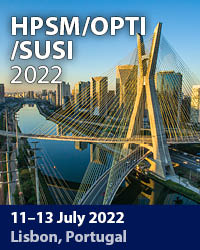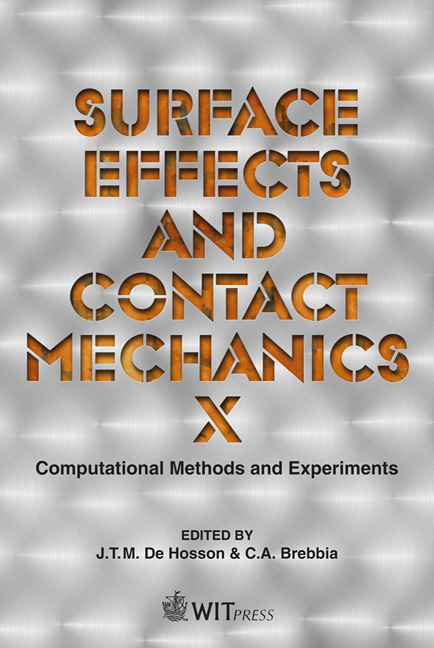Effect Of Surface Temperature On Tribological Behavior Of PTFE Composites
Price
Free (open access)
Transaction
Volume
71
Pages
11
Page Range
219 - 229
Published
2011
Size
4,290 kb
Paper DOI
10.2495/SECM110191
Copyright
WIT Press
Author(s)
M. Conte, B. Fernandez & A. Igartua
Abstract
Tribological behavior of PTFE is highly affected by fillers used to improve its mechanical characteristics and depends on the ability of the material to maintain its integrity in the working conditions. Specifically, in the case under study, the heat generated by friction was modelled as a heat flow coming from a source at the contact surface in static condition. Considering that a heat flow is also supplied to the samples during a Differential Scanning Calorimetry (DSC) analysis, where crystallinity of material is evaluated, a correlation between thermal characteristics of the material, its structure and tribological behavior is presented. Keywords: PTFE, friction, heating, wear, temperature rise. 1 Introduction Polytetrafluoroethylene (PTFE) is well known for its low coefficient of friction in dry conditions even if it presents low carrying capacity, which is a reason why manufacturers have been trying to improve its mechanical characteristics by means of opportune fillers building a wide family of PTFE composites [1]. The results have been quite interesting but, at the end it has been seen that such fillers compromise PTFE’s attractive low friction properties (μ<0.1) even if wear of said composites in comparison with virgin PTFE is further reduced [2]. Furthermore, the disadvantage of using hard phases in soft matrix is well known, that is, the possibility of transfer film removal and the aggressive abrasion of the hard counterface if the hard phases are released to the interface as a third body due to loosening of the bond between the filler and the polymer matrix: it was found that the particles used as fillers were rubbed off during the test, highlighting the weakness between the transfer film and the countersurface [3]. Surface Effects and Contact Mechanics X 219 www.witpress.com, ISSN 1743-3533 (on-line) WIT Transactions on Engineering Sciences, Vol 71, © 2011 WIT Press doi:Keywords
PTFE, friction, heating, wear, temperature rise





